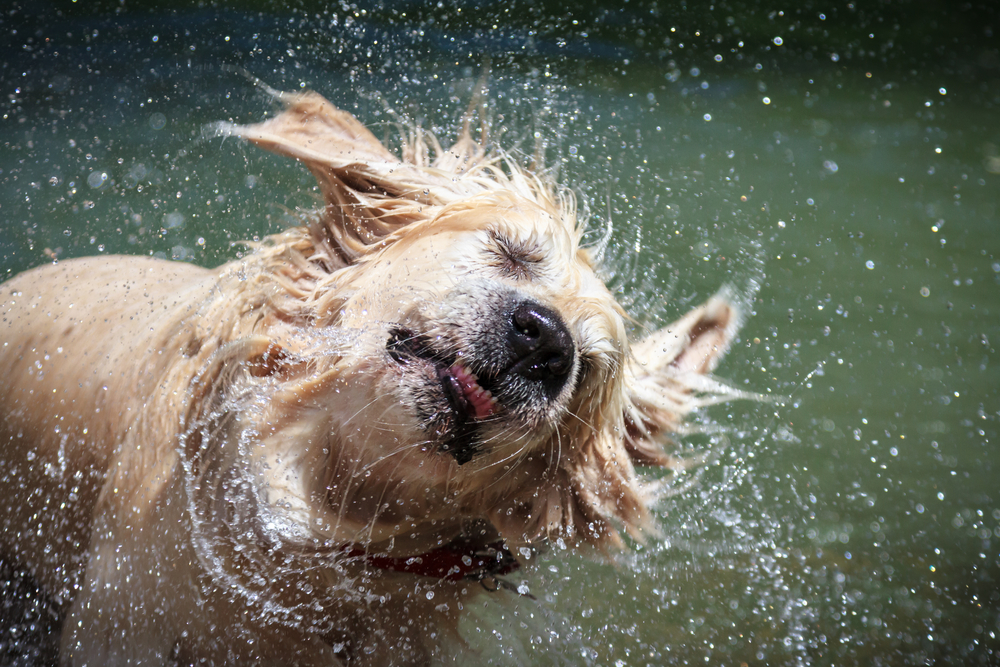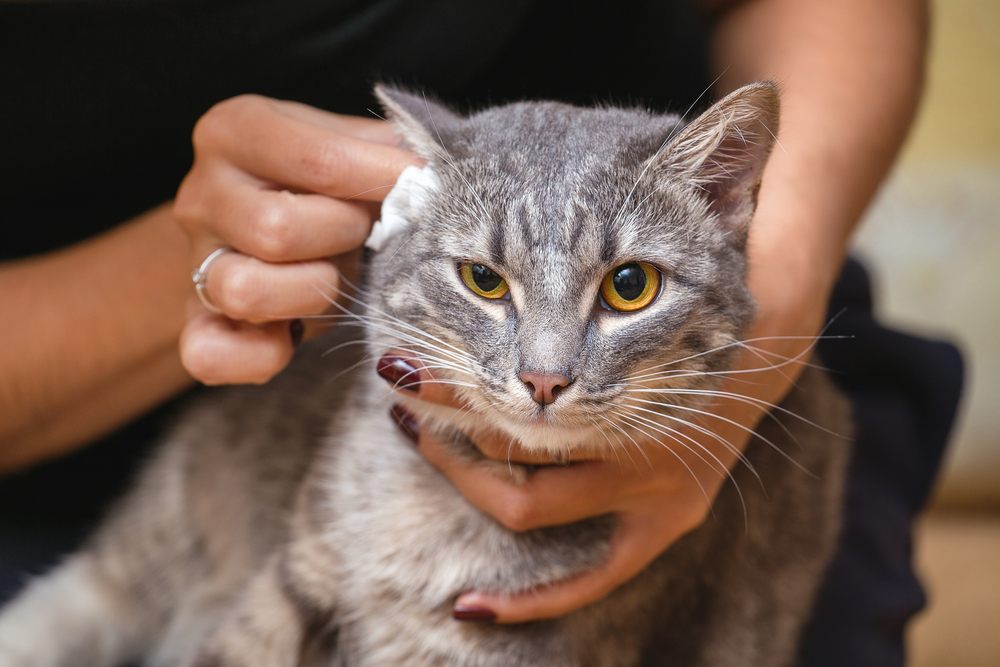Your pet’s ears are extra sensitive to sounds of their world and always alert them to possible danger for themselves and for you. Ear care is essential for your four-legged friend’s good hearing, and cleaning their ears is a component of this care. Regular ear cleaning helps prevent infections, removes excess wax and debris, and promotes good hygiene.
However, many pet owners have trepidations about this care, so our Liberty Veterinary Hospital team wants to walk you through the steps of effective ear cleaning for your dog, cat, or other furry friend.
Pet ear anatomy
Before you start cleaning your pet’s ears, you must understand the basic anatomy. Dogs and cats have similar ear structures:
- The outer ear (pinna)
- The middle ear, which includes the eardrum and three bones
- The inner ear
- The cochlea (i.e., the hearing organ)
- The vestibular system
- The ear canal, which is L-shaped in dogs and therefore prone to trapping debris and moisture that can cause infection without regular cleaning
Your pet’s ears are sensitive and complex and can easily be damaged, so knowing their anatomy is necessary so you can clean them safely.
Pet ear problem signs
Always monitor your pet closely for signs of ear problems, which may include:
- Excessive scratching
- Rubbing the ears
- Head shaking
- Redness or inflammation
- Foul or yeasty odor
- Discharge
- Sensitivity to touch
Consult our Liberty Veterinary Hospital team if your pet shows any of these signs before proceeding with ear cleaning to prevent causing further damage to the sensitive structures of your pet’s ear.
Cleaning solution for pet ears
Using the right cleaning solution is important for your furry pal’s health and safety. Avoid harsh chemicals or household products, which can irritate your pet’s delicate ear tissues, and opt for a veterinary-approved ear-cleaning solution. These pet-specific solutions help dissolve wax and debris while maintaining the ear’s natural pH balance.
Step-by-step pet ear cleaning
Now that you are ready to proceed, follow these steps for a safe and effective cleaning routine:
- Restrain — Gently restrain your pet to prevent them from moving around. You may need another person to hold your pet if they are particularly squirmy, or you can choose a time when they are relaxed.
- Lift — Hold your pet’s ear flap securely, but not too firmly. Lift the flap upward to straighten the ear canal, which allows better access for cleaning and inspecting the ear. You can get a closer look with a small flashlight.
- Apply — Apply a few drops of the ear-cleaning solution to your pet’s ear canal, being careful not to insert the applicator tip too deeply into the ear to avoid injury.
- Massage — Massage the base of your pet’s ear gently for about 20 to 30 seconds to help distribute the cleaning solution and loosen any wax or debris.
- Shake — Allow your pet to shake their head a few times, which will help dislodge loosened wax or ear canal debris.
- Remove — Using cotton balls or gauze pads, gently remove the excess cleaning solution, wax, and debris from the outer ear and ear canal. Do not use Q-Tips or cotton swabs, which may push debris further into the ear or damage the middle or inner ear.
- Treat — Finally, praise and treat your pet. By rewarding them after cleaning each ear, they will form a positive association with the task.
Ear cleaning frequency for pets

Ear cleaning should be performed regularly. Your veterinarian can advise you on the cleaning frequency (i.e., weekly, monthly) according to your pet’s breed, activity level, and ear health, and provide additional tips on keeping your pet’s ears healthy. Pets who are prone to ear infections may need more frequent cleanings. High risk factors include:
- Droopy ears — The anatomy of a droopy ear facilitates moisture accumulation and prevents drying.
- Narrow ear canals — Pets with narrow ear canals, such as Shar peis, are at increased risk because debris and wax accumulates, attracting bacteria and yeast.
- Hairy ear canals — Pets, such as poodles and cocker spaniels, who have excess hair in their ear canals are at higher risk because the wax and debris can attach to the hair.
- Water lovers — Dogs who love to swim are also at increased risk unless their ears are thoroughly dried after a dip.
- Allergic pets — Pets who have allergy issues are at increased risk because the skin layer is compromised, which can predispose them to infection.
Ear cleaning should be a part of your pet’s grooming routine to help prevent ear infections and other ear-related issues. To learn more about pet ear cleaning and ear health, contact our Liberty Veterinary Hospital team. We will be all ears—pun intended—and ready to help your pet.








Leave A Comment